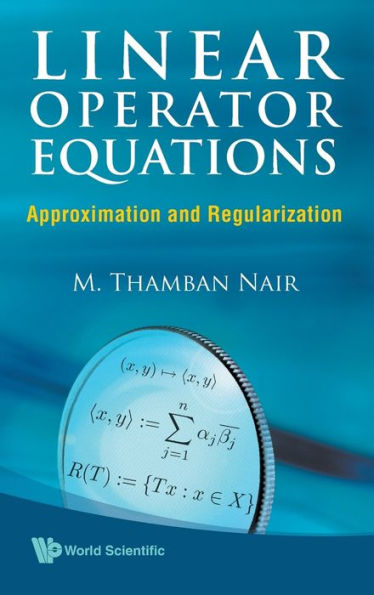Linear Operator Equations: Approximation And Regularization
Many problems in science and engineering have their mathematical formulation as an operator equation Tx=y, where T is a linear or nonlinear operator between certain function spaces. In practice, such equations are solved approximately using numerical methods, as their exact solution may not often be possible or may not be worth looking for due to physical constraints. In such situations, it is desirable to know how the so-called approximate solution approximates the exact solution, and what the error involved in such procedures would be.This book is concerned with the investigation of the above theoretical issues related to approximately solving linear operator equations. The main tools used for this purpose are basic results from functional analysis and some rudimentary ideas from numerical analysis. To make this book more accessible to readers, no in-depth knowledge on these disciplines is assumed for reading this book.
1101219072
Linear Operator Equations: Approximation And Regularization
Many problems in science and engineering have their mathematical formulation as an operator equation Tx=y, where T is a linear or nonlinear operator between certain function spaces. In practice, such equations are solved approximately using numerical methods, as their exact solution may not often be possible or may not be worth looking for due to physical constraints. In such situations, it is desirable to know how the so-called approximate solution approximates the exact solution, and what the error involved in such procedures would be.This book is concerned with the investigation of the above theoretical issues related to approximately solving linear operator equations. The main tools used for this purpose are basic results from functional analysis and some rudimentary ideas from numerical analysis. To make this book more accessible to readers, no in-depth knowledge on these disciplines is assumed for reading this book.
102.0
In Stock
5
1

Linear Operator Equations: Approximation And Regularization
264
Linear Operator Equations: Approximation And Regularization
264Hardcover
$102.00
102.0
In Stock

Product Details
| ISBN-13: | 9789812835642 |
|---|---|
| Publisher: | World Scientific Publishing Company, Incorporated |
| Publication date: | 05/27/2009 |
| Pages: | 264 |
| Product dimensions: | 6.10(w) x 9.00(h) x 0.70(d) |
From the B&N Reads Blog
